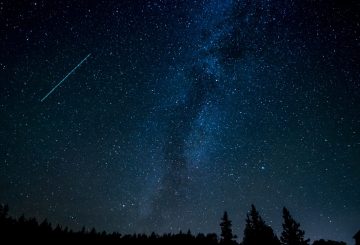반딧불 및 기타 야행성 벌레는 어둠 속에서 탐색하고 생존하는 놀라운 능력을 가지고 있습니다.하지만 빛 공해는 그들의 삶을 더욱 어렵게 만들고 있습니다.낮에 사는 동물인 인간은 밤을 좋아하는 이 곤충에게 우리가 끼치는 영향을 깨닫지 못하는 경우가 많습니다.
어둠 속에서는 눈이 잘 안 보이기 때문에 불이나 전기로 밤을 밝혀 왔습니다.하지만 이 인공 조명은 야행성 곤충의 환경을 변화시키고 있습니다.실제로 전 세계 육지 면적의 약 23% 가 빛 공해의 영향을 받고 있는데, 이는 곤충 개체수 감소에 기여하는 것으로 여겨집니다.
연구에 따르면 인공 조명에 끌린 곤충의 약 1/3이 아침에 죽는데, 이는 주로 피로로 인한 것입니다.이는 개체 수와 수분 등 중요한 과정에 심각한 영향을 미칠 수 있습니다.
많은 벌레는 밤에 더 활동적인데, 아마도 낮에 활동하는 포식자를 피하기 위해서일 것입니다.뉴질랜드 반딧불이와 같은 일부 벌레는 스스로 빛을 낼 수도 있습니다.
달빛은 햇빛보다 100만 배 덜 강하지만, 야행성 곤충은 여전히 보고 움직일 수 있습니다.곤충은 수백만 개의 작은 렌즈로 구성된 특별한 눈을 가지고 있는데, 이 렌즈는 빛을 포착하여 광수용체에 초점을 맞춥니다.
어떤 사람들의 생각과는 달리, 야행성 곤충은 인공조명을 달이나 별과 착각하기 때문에 인공조명에 끌리지 않습니다.사실, 쥐들은 달빛과 별빛을 이용해 자신이 날 때 어느 방향이 위로 올라갔는지 알아냅니다.
인공 조명의 색도 야행성 곤충에게 얼마나 매력적인지에 영향을 미칠 수 있습니다.예를 들어, 나방은 사람이 볼 수 없는 빛의 파장을 감지할 수 있으며 청색광에 가장 민감합니다.즉, LED 가로등에서 생성되는 밝고 차가운 백색광은 나방에게 매우 매력적일 수 있습니다.
빛 공해를 줄여 야행성 곤충을 보호할 수 있습니다.밤에 커튼을 닫고, 동작이 활성화되는 외부 조명을 사용하고, 따뜻한 색상의 전구를 선택하는 것과 같은 간단한 조치만으로도 큰 차이를 만들 수 있습니다.조명을 끄고 밖에 나가는 것도 밤하늘의 아름다움을 감상하는 데 도움이 됩니다.




























































